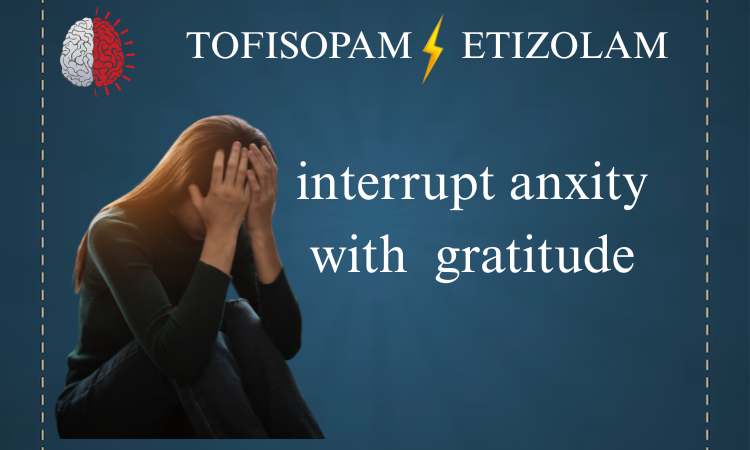Anxiety in medical terms is a feeling of apprehension and fear manifested in palpitations, sweating, and an overall feeling of intense fear and stress. Anxiety can impact your memory and make you more prone to mistakes. It can impact your social life and relationships to the extent of your health through stomach cramps and chest pain. Anxiety can manifest in the form of generalized anxiety, phobia related disorders, Obsessive Compulsive disorders and Post Traumatic Stress Disorder. Long term anxiety can turn into depression and leave lifelong impacts on your body and mind.
Statistical Analysis
Anxiety is not an uncommon problem. It is said to be the most common illness in the USA, affecting 40 million adults and 18% of the US population yearly. An estimated 275 million people suffer from anxiety globally, making it 4% of the total population. It is estimated that around 62% of those suffering from anxiety are females. Increased stress, low self-esteem, genetics and substance abuse are some of the risk factors for the condition. But systemic conditions like thyroid disorders, diabetes, lungs or heart disorders or the effect of done medications can worsen the problem.
Treatment options and Benzodiazepines
SSRIs, SNRIs, Benzodiazepines and Tricyclic anti-depressants are some of the most widely used treatment options for anxiety. All of these medications work by binding to a neurotransmitter and regulating its levels to induce anxiolytic effects and calming sensation on the patient. Among all these options, benzodiazepines are the most preferred and widely used ones because of their effectiveness and safety in comparison to SSRIs and particularly Tricyclic Anti-depressants. Additionally, they have a wider therapeutic index, and tolerance develops more slowly in them. Benzodiazepines can be long, intermediate or short-acting depending on their onset of action. Tofisopam and Etizolam are two such benzodiazepines.
A word about Tofisopam and Etizolam
Etizolam is a benzodiazepine analog that is actually a Theniodiazepine. Benzodiazepine analogs are termed so because of their similarity to benzodiazepines without sharing their chemical structure of them. Etizolam, a Theniodiazepine, contains a diazepine ring fused to a thiophene ring. In simple words, Etizolam has properties very similar to that of Benzodiazepines without sharing their exact chemical structure. This reduces its tolerance level and risk of addiction to some extent. Tofisopam, in comparison, is a benzodiazepine with a modern structure. Tofisopam, in comparison to the 1,4 benzodiazepines, is a 2,3 benzodiazepine drug or a benzo derivative. Because of this, it does not bind to the GABA receptors and thus has different a pharmacological profile.
Let’s understand this in detail.
Benzodiazepines, being synthetic compounds, have a cyclic structure, including one benzene ring and a heterocycle. In this heterocycle, there are 2 nitrogen atoms that can be in positions 1 and 4 or in positions 2 and 3. Normally, benzodiazepines have nitrogen atoms in positions 1 and 4 because of which they are referred to as 1,4 Benzos. Tofisopam has nitrogen atoms in positions 2 and 3, making it a 2,3 benzodiazepine. Because of its different chemical structure, its properties differ from other Benzos as well.
What is unique about Tofisopam?
Tofisopam, because of its structure, is an AMPA receptor. It possesses unique anxiolytic properties in comparison to the musculoskeletal, hypnotic and sedative properties of other traditional Benzos. When administered, Tofisopam -unlike other Benzos do not impair the psychomotor and intellectual performance of the user. In fact, studies have found that it has a mild stimulatory effect on cognitive qualities. Alleviating vegetative symptoms associated with anxiety attacks is another quality of the medication. Tofisopam does not induce sleep even in doses above the safety threshold and only then exhibits neuroleptic effects.
How does it work?
AMPA receptors (Alpha Amino 3 methyl 4 isoxazolepropenoic receptors) are isotropic transmembrane receptors for glutamate in the CNS. Glutamate, along with being an alpha-amino acid, is also an excitatory neurotransmitter that serves as the precursor of the inhibitory neurotransmitter GABA protein. AMPA receptors are said to modulate cell excitability by gating the flow of sodium and calcium inside cell membranes. AMPA is one of the unique receptors that, when excessively stimulated, can actually promote the treatment of various debilitating CNS disorders. Additionally, Tofisopam is an iso-enzyme selective phosphodiesterase inhibitor found in a drug repositioning strategy SELNERGY.
What is a drug repositioning strategy?
Drug Repositioning Strategy is a method of identifying new therapeutic agents from existing FDA-approved clinically used drug molecules. It helps develop drug candidates with new pharmacological activities or therapeutic properties. Discovering a new drug is an expensive, time-consuming process with extensive research required to develop a new drug and make it accessible to the general public outside of clinical trials. Through drug repositioning strategy, previously approved drugs are explored further for new therapeutic potentials. Through a drug repositioning strategy, it was found out that Tofisopam, previously used as N anxiolytic medication for geriatric patients, could be used in new therapeutic indications involving the AMP modulation through PDE 4 inhibitors.
That said, about the unique properties of Tofisopam, it becomes convenient to differentiate its therapeutic properties from other Benzos.
A word about Etizolam
Etizolam is a potent benzodiazepine with 93% bioavailability and 5-7 hours duration of action. It was patented in 1972 and approved in 1983 for anxiety and panic disorders. Etizolam, apart from anxiolytic, also has amnesic, anticonvulsant and skeletomuscular relaxant properties. Anxiety problems and OCD have been proven to respond well to Etizolam when used for a short term. Additionally, it has better tolerance in comparison to other first-generation benzodiazepines. In a study conducted to determine the effectiveness of Etizolam, Alprazolam and Bromazepam for anxiety, Etizolam showed a marked increase in anxiety in the 2nd and 4th weeks than others. The anxiolytic activity of Etizolam has been said to be 6-8 times more than Diazepam. In higher doses, Etizolam has been known a reduction in time taken to fall asleep with an increase in total sleep time and reduced awakenings. But there is a catch.
Problem with higher doses of Etizolam
Higher doses of Etizolam can increase the risk of tolerance and pose the threat of addiction potential in the course of time. In a study conducted to explore the abuse potential of Etizolam, clinical data were collected from a database of 1293 patients admitted to the Addiction Medicine Unit, Verona University Hospital, Italy. These patients were admitted for detoxification from high dose benzodiazepines or because of dependence on Z-drugs. The study found 11 Etizolam users, with 8 of them using only Etizolam and three of them using the medication in combination with other medications. These people have been prescribed Etizolam for anxiety or insomnia. Problems in working memory, visuospatial memory and executive function were noticed in one of these 11 subjects using 15 mg Etizolam regularly.
What was the overall finding?
The study brought out new information about the potential harms of Etizolam in people prescribed the drug for medical purposes. With other findings from other forums, this report led the WHO to consider the abuse liability of Etizolam as a social problem with declaring it a controlled substance. While other countries have inferred it a Schedule IV status, the USA has declared it a Schedule I medication and completely banned its use. The DEA has further revealed about increasing drug seizures involving Etizolam since 2012 with a myriad of side effects from impaired cognitive abilities to a motor imbalance resulting in falls and road accidents.
What about the tolerance of Tofisopam?
Tofisopam is a second-generation benzodiazepine that indirectly stimulates the GABA receptors but does not bind directly to the benzodiazepine sites. Because of its structure and mode of action do not cause sedation after its use but focus on inducing calmness without the associated sleepiness. Because of its noninterference in psychomotor and intellectual activities, its users greatly prefer it. Most Benzos are best used short term within a maximum period of 4-8 weeks. Tofisopam can be used for a longer time period of above 12 weeks without any serious side effects or increase in tolerance potential. This makes Tofisopam a better option than Etizolam for anxiolytic purposes.
Tofisopam and COVID connection
The recent pandemic has brought the emergence of a new virus named Sars-Covid. Presenting with symptoms of flu and pneumonia, even after recovering from Covid, people report persistent respiratory, neurological and psychiatric symptoms. These neuropsychotropic symptoms manifest in the form of low mood, lack of confidence, fatigue and sometimes progress as negativism, sleep disturbance and cognitive dulling with PTSD. Given the collective description of brain fog, these symptoms can seriously impact the individual’s mental health with his road to recovery. There were three instances in which Tofisopam was tried on post-Covid patients. All of them presented with social withdrawal symptoms with dull and lethargic behaviour with somnolence and low mood. An improvement in the symptoms was noted within 2-4 weeks of starting the medication. Because of the anxiolytic properties combined with cognitive stimulation, Tofisopam can play an important role in Covid recovery, provided its effects are proved by further clinical trials.
Is it all good?
Like all medications, Tofisopam comes with a list of side effects and safety instructions. Despite the reduced risk of complications, there still is an amount of dizziness, loss of pain and nausea that may still occur as side-effects on its use. It can cause allergic reactions in people and lead to serious complications. Further, its misuse or overuse can increase the risk of addiction potential and be harmful to the body if used in immoderation for more than 12 weeks. Tofisopam is also off-limit to a few categories of patients. Because of its lactose content, it cannot be used in lactose-intolerant people or those with congenital lactose insufficiency. Furthermore, it can aggravate the problems in people with sleep apnea or psychiatric conditions accompanied by psychomotor aggravation or severe depression. People with decompensated respiratory failure and ladies in the first trimester of pregnancy are also advised not to use it.
Conclusion
There are a number of factors that need to be considered while comparing Etizolam to that of Tofisopam. Firstly, Tofisopam can solve the problem of tolerance and addiction but not the illegal manufacturing of Etizolam. The illegal dealing of Etizolam is still rampant despite strict government measures to control the situation. Secondly, Tofisopam , despite its added advantages, is still a benzodiazepine. Its misuse, overuse, or unregulated use can still lead the drug to accumulate in the bloodstream and cause many complications. Lastly, Tofisopam , despite its novel approach, is still a new drug. Whatever research has been conducted in this field is insufficient regarding the cognitive and anxiolytic advantages of the drug. Further research and drug repositioning strategies need to be conducted to spread public awareness regarding the drug by exploring its therapeutic properties.
Reference



